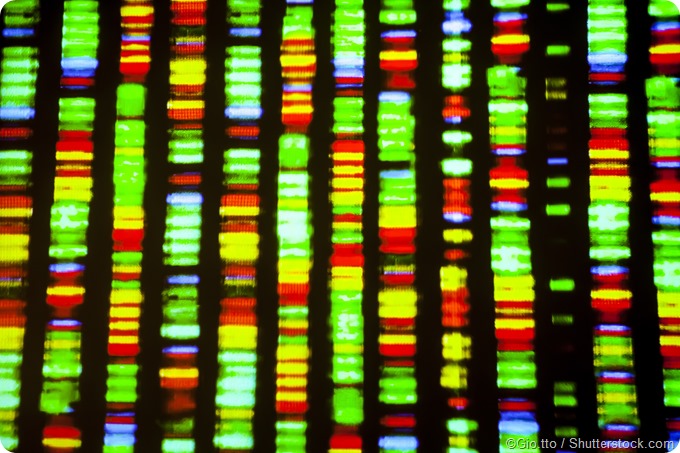DNA sequencing is the process used to determine the order of nucleotides in a specific DNA molecule. This information is useful for researchers in understanding the type of genetic information that is carried in the DNA, which may affect its function in the body. It can then, in turn, help to detect genetic changes that may be associated with causing certain health condition.

DNA has a double helix structure that is composed of four chemical bases that always exist in the same pairs. The nucleotide adenine (A) always pairs with thymine (T) in DNA, and the nucleotide cytosine (C) always pairs with guanine (G). These pairs form the basis of DNA molecules and the way in which the cells replicate and divide. This concept lies at the core of the DNA sequencing methods.
DNA Sequencing - 3D
Progression of sequencing technology
Genomics is a relatively new field; in fact, the first DNA sequences were only obtained less than half a century ago in the early 1970s. At this time, researchers relied on two-dimensional chromatography techniques to sequence the DNA, which was very time-consuming.
In recent decades there have been significant advancements in the technology available for DNA sequencing. Fluorescence-based sequencing methods were introduced to increase both the ease and speed of research. The improvement in technology has corresponded to a significant increase in the rate of sequencing and accelerated growth in related research. This has enabled the entire human genome to be sequenced, in addition to many other species of plants and animals.
Present and future sequencing technology
At this time, there are various methods and technologies that can help in the process to sequence the DNA. Some laboratories are now able to sequence an excess of 100,000 billion nucleotide bases each year. The process has also reduced significantly in cost, and an entire genome would only cost a few thousand dollars at this time.
The technology is expected to continue to improve in the future. New methods are still under development, including some that utilize nanopores to sequence the DNA. This would work by threading single strands of DNA through nanopores in the cell membrane, which would then be read by the technology in single file.
Types of DNA sequencing
Broadly speaking, there are two types of DNA sequencing: shotgun and high-throughput.
Shotgun (Sanger) sequencing is the more traditional approach, which is designed for sequencing entire chromosomes or long DNA strands with more than 1000 base pairs. It involves a rapidly expanding firing pattern to read the DNA in short fragments of 100 to 1000 base pairs, which are then overlapped with a computed analysis system.
High-throughput is the next-generation method of DNA sequencing, which has led to the rapid acceleration of DNA sequencing and broadened knowledge in the field. It is able to produce thousands of sequences simultaneously, which lowers the cost of the technique significantly.
Applications of DNA sequencing
Understanding the sequences of DNA can be applied in various settings. It now forms the base of biologic research and is applied in biotechnology, forensic biology, virology and medical diagnoses.
Researchers are already able to use the results of DNA sequencing to compare long lengths of DNA. In some cases, this may include looking at segments of over a million bases to compare differences in the sequencing. This information can reveal important information about the role of certain DNA patterns and susceptibility to health condition or response to medical treatment.
The routine use of DNA sequencing as a diagnostic tool for the general practitioner remains a possibility for the future, but there are some ways that sequencing is already being used for medical purposes. For example, DNA sequencing is currently used for cancer patients to help identify the type of cancer that is present, which directs the treatment decisions for the patient. Similar methods are currently in development for other health conditions that are likely to have a genetic element, such as cardiovascular disease and diabetes.
References
- http://www.genomenewsnetwork.org/resources/whats_a_genome/Chp2_2.shtml
- https://www.youtube.com/watch?v=91294ZAG2hg
- https://www.genome.gov/10001177/dna-sequencing-fact-sheet/
- https://www.britannica.com/science/DNA-sequencing
Further Reading
Last Updated: Feb 26, 2019